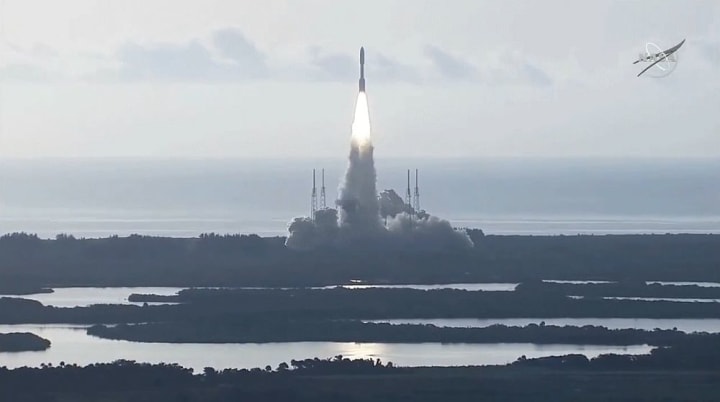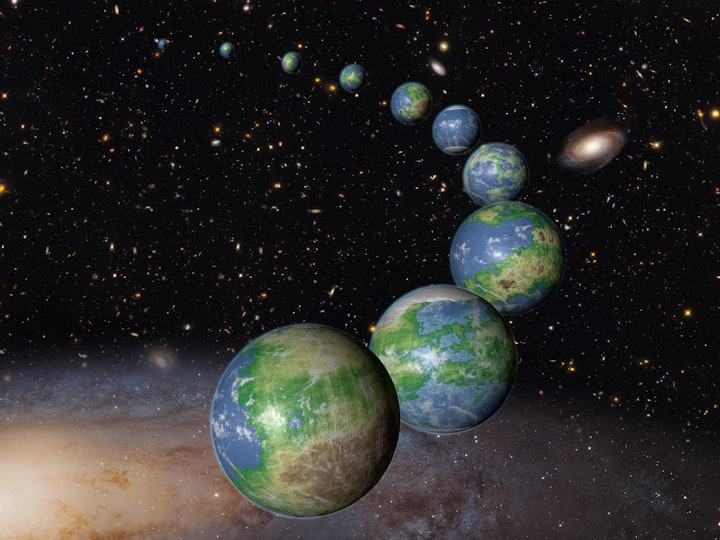The 12 Top Astronomy Stories of 2020
Presenting the 12 top stories about space and astronomy from 2020

All in all, 2020 was a year filled with unexpected news, challenges, and setbacks. And, despite everything, every month also offered new discoveries about the Universe we all inhabit.
Discoveries were made, theories updated, and we lost one of the greatest telescopes in the world. Astronomers, like everyone else, were inundated with the challenges this year presented to people around the globe.
But still, science advanced.
Let’s look at the top astronomy news stories of 2020, focused on the top story in astronomy and space exploration from each month.
January
Inouye Solar Telescope Scores Big with First Video of Sun

Astronomers using the new Daniel K. Inouye Solar Telescope in Hawaii have released their first public images of the Sun, and they are the most detailed images of our parent star ever taken. Images from the next-generation National Science Foundation (NSF) solar observatory reveal details on the surface measuring just 30 kilometers (18 miles) in diameter.
The new four-meter (157 inch) instrument (the largest solar telescope in the world) recorded images and video of turbulent plasma on the surface of the Sun, providing an unprecedented level of detail for solar researchers.
February
Largest Explosion Seen Since Big Bang Rocked Distant Cluster of Galaxies

Astronomers find evidence of the most powerful explosion ever seen in the history of the Universe. What do we know about this mammoth eruption?
The largest explosion ever seen in the history of the Universe ripped through a plasma cloud hundreds of millions of years ago, creating the most powerful explosion seen by astronomers since the Big Bang, a new study reveals.
The eruption, centered on a supermassive black hole (SMBH) in the Ophiuchus galaxy cluster (roughly 390 million light-years from Earth) produced energetic jets, ripping a mammoth hole, 15 times larger than the Milky Way Galaxy, in the cloud of plasma surrounding the galactic cluster.
Read more on The Cosmic Companion
March
Is Betelgeuse About to Explode, or is it Just Dusty?

The star Betelgeuse is well-known as a red star seen as one of the shoulders of the constellation Orion. Since late autumn 2019, both amateur and professional astronomers have noted significant dimming from this tawny star.
Betelgeuse dimmed by around 60 percent over the course of just a few months beginning in October 2019, leading astronomers to speculate on the causes of it errant behavior. One idea held that this star was on the verge of exploding as a powerful supernova. However, a new study suggests this dimming may be the result of dust blocking light from the massive star.
April
Hubble Shows Comet Atlas Breaking Apart

Comet Atlas was once shaping up to be the brightest comet seen from the northern hemisphere since comets Hale-Bopp and Hyakutake in the mid 1990’s. Now, the comet has completely broken up, shattering into dozens of massive pieces.
Fortunately, the Hubble Space Telescope trained its eye on the head of the comet on April 20 and the 23rd as the spaceborne iceberg broke apart. The first image showed 30 fragments where the nucleus (main body) of the comet should have been found. The second observation showed 25 pieces of ice and rock, each the size of a typical house or larger.
Before it broke up, the comet (official name: C/2019 Y4 (ATLAS)) was thought to be as much as 200 meters (660 feet) in diameter.
Read more on The Cosmic Companion
May
Asteroid that Killed Dinosaurs Hit at Worst Possible Angle

Around 66 million years ago, an asteroid larger than Mt. Everest ripped through the atmosphere of Earth, striking our planet at the Yucatán Peninsula, on the southeastern coast of Mexico. This event set off fires around the globe, and the dust kicked into the air blocked out the Sun over large portions of the world. Soon, the era of dinosaurs, which lasted 175 million years, was snuffed out.
Simulations show the impactor struck Earth at an angle around 60 degrees to the surface of Earth. Striking at this angle, the asteroid kicked up the greatest possible amount of dust, maximizing climate change, killing off the clade of animals, as well as 75 percent of other species on Earth.
June
The Oceans of Europa may be Habitable

The oceans of Europa may be habitable, according to a new model developed by NASA. This moon — 3,100 km (1,900 miles) in diameter — is the fourth-largest moon orbiting Jupiter. Although smaller than our own Moon, Europa is larger than Pluto.
Europa rotating in space. Video credit: The Cosmic Companion / Created in Universe Sandbox
The Voyager and Galileo spacecraft revealed images and data from Europa revealing vast storehouses of water beneath the surface of the giant moon. However, the chemical makeup of these extraterrestrial oceans remain uncertain. Using information collected during the Galileo mission, researchers from NASA’s Jet Propulsion Laboratory simulated conditions beneath these alien seas.
Read more on The Cosmic Companion
July
Mars 2020 Lifts off to the Red Planet

Mars 2020 — NASA’s latest mission to Mars — lifted off from Cape Canaveral on July 30, on its way to explore the most Earth-like world in the Solar System.
At 7:50 am EDT (4:50 am PDT) on July 30, a pair of mighty RD AMROSS RD-180 engines ignited, together with four solid rocket boosters, lifting a United Launch Alliance (ULA) Atlas V rocket from Space Launch Complex 41 at Cape Canaveral Air Force Station in Florida on its way to Mars.
August
Is Panspermia Possible? Bacteria Living Three Years in Space Could Survive a Trip to Mars

Panspermia — the idea that life on Earth was seeded by organisms from outer space — looks more likely as bacteria survive three years in space by bundling together for protection.
The bacterial exposure experiment took place from 2015 to 2018 using the Exposed Facility located on the exterior of Kibo, the Japanese Experimental Module of the International Space Station. Image credit: JAXA/NASA
Panspermia means “seeds everywhere,” and the concept represents the idea that life on Earth may have been seeded by biological lifeforms from outer space. This long-controversial idea recently received some experimental support from a new study out of Japan.
This extremes of life were tested utilizing the International Space Station to examine how microbes might live in the extreme conditions of space.
Read more on The Cosmic Companion
Watch our video explaining panspermia and this experiment
September
First Intermediate-Mass Black Hole Found — Posing a Massive Question

The first intermediate mass black hole ever seen has been discovered by astronomers, forming from the collision of a pair of smaller black holes. Interestingly, one of these had a mass that should not be allowed by our current understanding of these enigmatic objects.
An international team of astronomers witnessed the birth of the first intermediate-mass black hole ever detected. On May 21, 2019, a pair of gravitational wave observatories — The Laser Interferometry Gravitational-wave Observatory (LIGO) in the United States, and Virgo, a three-kilometer-long detector in Italy — detected an unusual signal, dubbed GW190521.
Watch our interview with Dr. Christopher Berry, researcher on this discovery
October
Water on the Moon Isn’t Just Hiding in the Shadows

Water is essential to the exploration of the Solar System, and this presents one of the greatest challenges to the colonization of space. The discovery of water ice hidden in the dark recesses of deep craters opens new resources for astronauts as they reach out beyond the Earth. However, accessing that water, deep in treacherous craters, would be challenging.
Water was just found in Clavius Crater, one of the largest craters in the Moon’s southern hemisphere, which is visible from Earth. This suggests water deposits may be found throughout the lunar surface.
Researchers previously saw evidence of water on the sunlit surface of the Moon, but evidence was uncertain. Hydroxyl, a fragment of molecules consisting of one atom each of hydrogen and oxygen, could have created the signal seen by researchers.
Read more on The Cosmic Companion
Watch our video on this discovery and SOFIA
November
A Eulogy for the Arecibo Radio Telescope

(Note: The telescope fell apart on December 1, destroying the instrument before it could be demolished).
The Arecibo radio telescope in Puerto Rico was the largest telescope in the world for decades. Several discoveries were made using this historic eye on the sky, and now, this remarkable instrument, damaged beyond repair, has fallen silent forever. Image credit: Mario Roberto Durán Ortiz
In Carl Sagan’s Contact, a dramatic scene shows Dr. Ellie Arroway, played by Jodie Foster, looking out over the magnificent Arecibo Telescope. And it was from this location that the human race sent our only significant radio message to alien astronomers on worlds orbiting distant stars.
Now, the Arecibo Observatory, wracked by a series of unfortunate events, is due to be demolished, ending its 57-year lifespan discovering the Universe.
The brainchild of Cornell University Physicist William Edwin Gordon, construction of the 305-meter (1,000-foot) dish began in a natural karst sinkhole in Puerto Rico in 1960. Development of the revolutionary telescope continued for three years before work was completed.
Watch our May 2020 interview with Arecibo astronomer Dr. Ann Virkki
December
Hayabusa2 Asteroid Sample Brings Ryugu Home

On December 6 (JST), a canister from the Japanese robotic explorer Hayabusa2, carrying precious material from the asteroid Ryugu, raced through our atmosphere, lighting up like a fireball, before landing safely in Australia.
A team of specialists came in, picking up the sample canister, carefully delivering it to a facility for analysis. The Hayabusa2 mission to the asteroid Ryugu successfully brought the first large samples of an asteroid to Earth.
Read more on The Cosmic Companion
Watch our interview with Professor Seiji Sugita, researcher on Hayabusa2!
There were also a myriad of additional discoveries made throughout the year, advancing our knowledge of the Universe. We found tiny pockets of water on Mars which could hold life. Hexamine — a chemical essential for life — has been found within an asteroid. Astronomers also laid their eyes on the oldest, most distant, galaxy ever seen.
A look forward to the launch of the James Webb Space Telescope, with Scott Lambros of NASA. Video credit: The Cosmic Companion
We hope you enjoyed this look at The 12 Top Astronomy News Stories of 2020.
Hopefully, 2021 will bring a long list of wonders of astronomy and advances in the exploration of space, including a pair of lunar eclipses, the launch of the James Webb Space Telescope, the first flight of a helicopter on another planet.
Subscribe to read our coming article on the top 10 space and astronomy news to look for in 2021.
Read more stories from The Cosmic Companion at thecosmiccompanion.com or thecosmiccompanion.net
About the Creator
The Cosmic Companion
The Cosmic Companion has been delivering high-quality, factual scientific news and features since 2018. We also offer a weekly show, Astronomy News with The Cosmic Companion, featuring interviews with scientists around the globe.






Comments
There are no comments for this story
Be the first to respond and start the conversation.